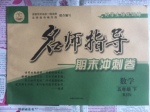17.Olaf Stapledon wrote a book called First and Last Men,in which he looked millions of years ahead.He told of different men and of strange civilizations,broken up by long"dark ages"in between.In his view,what is called the present time is no more than a moment in human history and we are just the First Men.In 2,000 million years from now there will be the Eighteenth or Last Men.
However,most of our ideas about the future are really very short-sighted.Perhaps we can see some possibilities for the next fifty years.But the next hundred?The next thousand?The next million?That's much more difficult.
When men and women lived by hunting 50,000 years ago,how could they even begin to picture modern life?Yet to men of 50,000 years from now,we may seem as primitive in our ideas as the Stone-Age hunters do to us.Perhaps they will spend their days gollocking to make new spundels,or struggling with their ballalators through the cribe.These words,which I have just made up,have to stand for things and ideas that we simply can't think of.
So why bother even to try imagining life far in the future?Here are two reasons.First,unless we remember how short our own lives are compared with the whole human history,we are likely to think our own interests are much more important than they really are.If we make the earth a poor place to live because we are careless or greedy or quarrelsome,our grandchildren will not bother to think of excuses for us.
Second,by trying to escape from present interests and imagine life far in the future,we may arrive at quite fresh ideas that we can use ourselves.For example,if we imagine that in the future men may give up farming,we can think of trying it now.So set you imagination free when you think about the future.
28.A particular mention made of Stapledon's book in the opening paragraphB.
A.serves as a description of human history
B.serves an introduction to the discussion
C.shows a disagreement of view's
D.shows the popularity of the book
29.The text discusses men and women 50,000 years ago and 50,000 years from now in order to show thatD.
A.human history is extremely long
B.life has changed a great deal
C.it is useless to plan for the next 50years
D.it is difficult to tell what will happen in the future
30.Spundels and ballalators are used in the text to refer toC.
A.tools used in farming
B.ideas about modern life
C.unknown things in the future
D.hunting skills in the Stone Age
31.According to the writer of the text,imagining the future willA.
A.benefit the present and future generations
B.enable us to better understand human history
C.help us to improve farming technology
D.make life worth living.
分析 短文主题为50,000年仅是人类历史长河的一瞬间.
解答 28.B,写作意图题,短文主题为50,000年仅是人类历史长河的一瞬间,因此作者提及Stapledon的书的目的当然是为了说明并介绍这个主题.
29.D,写作意图题,根据句子However,most of our ideas about the future are really very short-sighted.Perhaps we can see some possibilities for the next fifty years50,000年前,50,000后,时间跨度如此之大,作者提及这个时间跨度当然是为了说明在如此长的时间跨度内世事难料,不可捉摸,故答案为D.
30.C,词义猜测题,根据句子These words,which I have just made up,have to stand for things and ideas that we simply can't think of可知,既然世事如此之难料,任何新事物都有可能发生,所以作者为说明自己的观点而使用的新词汇当然是指未来的新事物,故答案为C.
31.A,推理判断题,根据句子by trying to escape from present interests and imagine life far in the future,we may arrive at quite fresh ideas that we can use ourselves可知,想像未来有助于回避短视行为,因此,充分想象未来对满足现在和未来人的需要都有好处,故答案为A.
点评 解答任务型阅读理解题,首先对原文材料迅速浏览,掌握全文的主旨大意.因为阅读理解题一般没有标题,所以,速读全文,抓住中心主旨很有必要,在速读的过程中,应尽可能多地捕获信息材料.其次,细读题材,各个击破.掌握全文的大意之后,细细阅读每篇材料后的问题,弄清每题要求后,带着问题,再回到原文中去寻找、捕获有关信息.最后,要善于抓住每段的主题句,阅读时,要有较强的针对性.对于捕获到的信息,要做认真分析,仔细推敲,理解透彻,只有这样,针对题目要求,才能做到稳、准.



 名师指导期末冲刺卷系列答案
名师指导期末冲刺卷系列答案